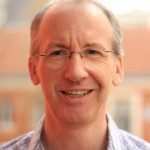Link to Pubmed [PMID] – 21226968
BMC Mol. Biol. 2011;12:2
BACKGROUND: Brown algae of the genus Ectocarpus exhibit high levels of genetic diversity and variability in morphological and physiological characteristics. With the establishment of E. siliculosus as a model and the availability of a complete genome sequence, it is now of interest to analyze variability among different species, ecotypes, and strains of the genus Ectocarpus both at the genome and the transcriptome level.
RESULTS: We used an E. siliculosus gene expression microarray based on EST sequences from the genome-sequenced strain (reference strain) to carry out comparative genome hybridizations for five Ectocarpus strains: four E. siliculosus isolates (the male genome strain, a female strain used for outcrosses with the genome strain, a strain isolated from freshwater, and a highly copper-tolerant strain), as well as one strain of the sister species E. fasciculatus. Our results revealed significant genomic differences between ecotypes of the same species, and enable the selection of conserved probes for future microarray experiments with these strains. In the two closely related strains (a male and a female strain used for crosses), genomic differences were also detected, but concentrated in two smaller genomic regions, one of which corresponds to a viral insertion site.
CONCLUSION: The high variability between strains supports the concept of E. siliculosus as a complex of cryptic species. Moreover, our data suggest that several parts of the Ectocarpus genome may have evolved at different rates: high variability was detected particularly in transposable elements and fucoxanthin chlorophyll a/c binding proteins.

